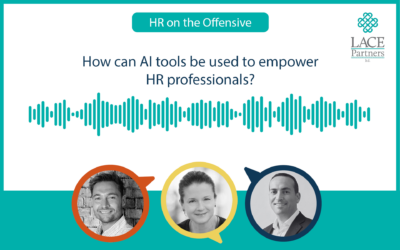This blog includes one of the the topics discussed in our recent One Big Thing research. Click here to learn more.
In this week’s blog we spoke to Mervyn Dinnen about a new book he has written with Matt Alder called ‘Digital Talent’. Read on to understand the core themes, including advice on continuously developing employees, trends in internal mobility and the needs of digital talent.
Why did you and Matt decide to write the book?
Our first book, Exceptional Talent, looked at how technology was transforming the recruitment, hiring, development and retention of talent. In the book we introduced the concept of ‘the new talent journey’. From the moment a candidate saw a vacancy or found out about a company, through to them leaving; technology underpinned everything. We began to see that a lot of the changes were digital, and there was requirement to have talent that was digitally aware.
The pandemic struck as I was writing a chapter for the book and that postponed any progress temporarily, as it brought about an era of rapid digital transformation. We then focused on writing about how to attract, hire, develop and retain talent and what that meant in a new world of accelerated digital transformation.
How can organisations attract digital talent?
For people in HR, talent acquisition and learning and development it is about understanding what ‘digital talent’ really is. There are several key traits that digital talent possess. One such trait is that they have intellectual curiosity, meaning they understand and want to know more; including wanting to know how their role is evolving. Another quality is that they want to take control of their learning. Learning skills as they face challenges will allow them to have access to what they need when they need it.
In the book we talk about support enablement and connection. We talked in the past about management when it comes to learning and performance. However, the modern workforce wants support and enablement. It’s not about telling them what to do; instead, it should be about supporting them so that they can do their best work. In some respects, it’s everybody’s responsibility. For example, it’s talent acquisition and marketing’s job to reach the right channels and represent the business in the right way. Then it’s HR and L&D’s role to take them on that enablement journey, helping them achieve their full potential.
How are leaders embracing the digital talent agenda?
A lot of leaders don’t have the same digital interaction with the way their business operates. They’re not as heavily involved in HR, recruitment and technology. A piece of research we conducted during the pandemic looked at how learning tools performed in a period of remote working. Nearly all the organisations we surveyed stated that the most important thing we invest in learning technology is the employee experience.
When asked what role the employee plays in the decision making of what to invest in, only about one in five of organisations said they take that into account when deciding what to purchase. The decision-making factors instead are usually finance and ease of integration. As a result, this creates a disconnect between leadership and their workers, underlining a need for greater transparency between the two.
In the book you cover internal mobility, can you give us a brief overview?
In the past, internal mobility was how people’s careers progressed, as it was common back then to have a single job for life. Suddenly, there was this big change where the talent you needed was someone else’s, not your own. We conducted research to find out why it’s easier for workers to get a job from another company than internally. One factor is cultural.
There are leaders who believe that you progress the business by bringing people in from the outside. Managers are rewarded for having high performing teams not creating them. Therefore, they don’t want them to move around the business, as it would result in them losing their team. Maybe surprisingly, we surveyed some companies who admitted that vacancies they put out are not shared internally. If we’re going to recognise and support our people, then the way to do it is to invest in their development.
Internal mobility is a talent acquisition issue, not a talent management one. Historically when a role needed filling we asked where ‘can we get someone to fill it’- not ‘who do we already know who can do this?’ However, there has been a resurgence in internal mobility over the past two years of remote working.
What are you referring to when you talk about the talent experience?
The talent experience is everything the employee experiences. ‘Micro experiences’ refer to the hundreds of experiences an employee has on a day-to-day basis – however to the employee it’s one seamless experience of an organisation.
To what extent has the DE&I agenda been helped by digital talent?
There is a chapter on DE&I in the book; it has always been important but only now are businesses truly starting to recognise it as such. An interesting concept I’ve been hearing a lot recently is the concept of collaborative hiring. This is when other employers are involved in the hiring process to give their views on the individual rather than leaving it to one person. This way of hiring can make people feel like they are treated fairly which is hugely important. As a result people are made to feel their treated fairly, and there’s a diversity of opinion on that candidate which is hugely important.
You can get your copy of Digital Talent here. If you’d like to talk to us about how to differentiate your people experiences from before they join the organisation right through their lifecycle as an employee, reach out to us using the form below.






